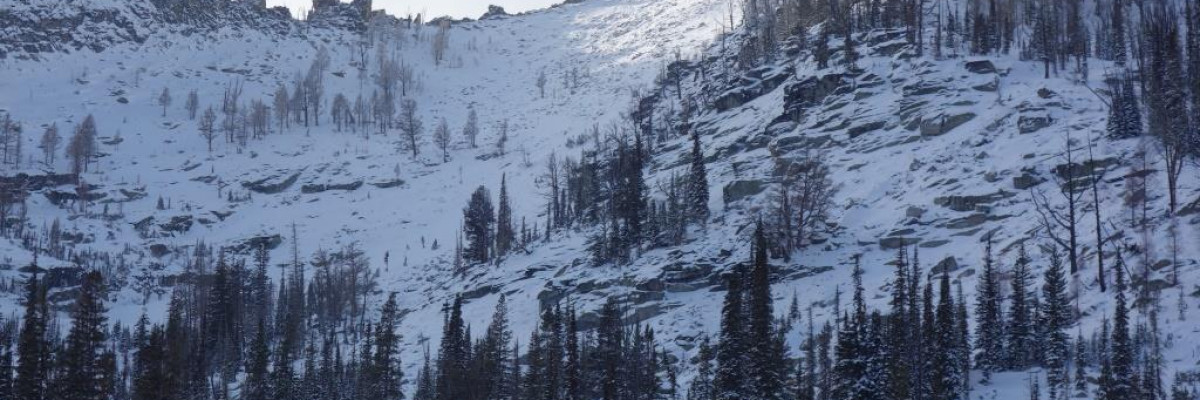This is Travis Craft with an early season snowpack update, on December 03, 2019.
Variable snow and avalanche conditions exist throughout the forecast area. In general, a rideable base does not exist below ~6500.’
Most terrain above this does not have enough snow to produce avalanches, except in isolated areas. Remember, if there is enough snow to ride, there is enough snow to slide. Avoid terrain traps and wind loaded areas.
The most significant objective hazard that currently exists is thin snowpack coverage that could result in injury and/or gear damage. There are a lot of snags hidden just beneath the snow surface, which make for risky descent conditions. Keep this mind, and don’t let your season end before it really starts!
The region’s snowpack has poor structure but generally lacks large enough slabs to be problematic. Where a sizable slab exists on top of buried facets and crusts, stability tests have shown that there is very easy failure and propagation (observations).
Persistent slabs are the primary avalanche concern. On upper elevation (7000’+) terrain steeper than 35º, D1-D2 human triggered are possible. These are most likely where a consolidated slab overlies faceted snow and crusts. There may not be red flags or clues of this problem. Dig a snowpit, assess layers, and conduct a stability test.
Isolated upper elevation (7000’+) D1-D2 human triggered wind slabs are the secondary avalanche concern on leeward terrain steeper than 35º (especially if convex or unsupported). Be on the lookout for wind loaded terrain. Pole probing and hand pits are an effective means of efficiently assessing the wind slab problem as you travel.
Please send us your observations! Your findings help us produce a more accurate forecast.
Unsettled weather with relatively warm temperatures, mountain snow showers, and moderate to strong upper elevation wind is forecast. No significant precipitation is expected. However, any new snow and wind may increase avalanche danger.
We will do our next snowpack update on Friday, December 05, 2019.
Ski and ride safe.
























